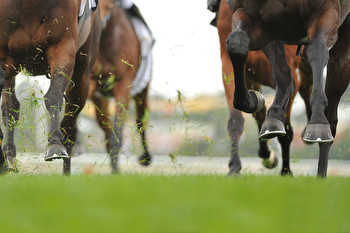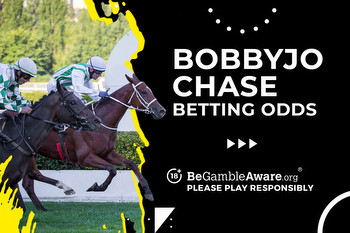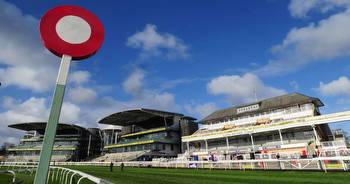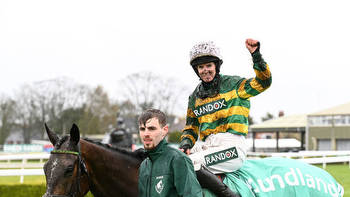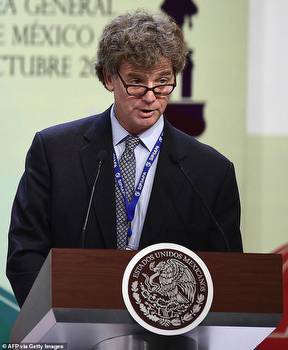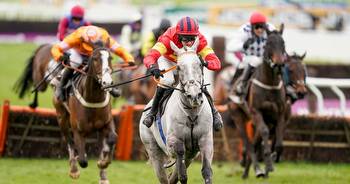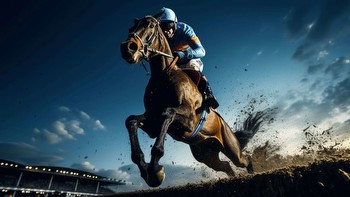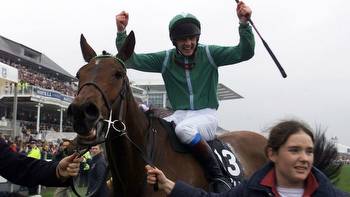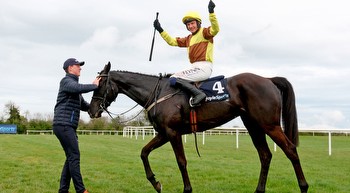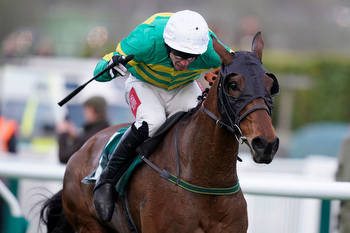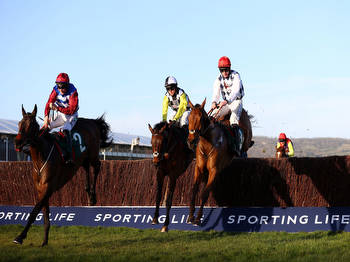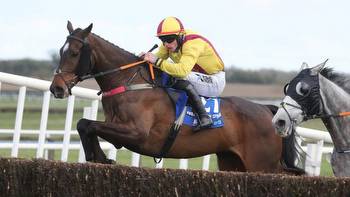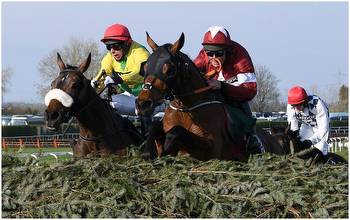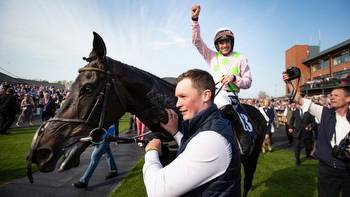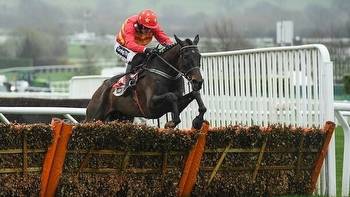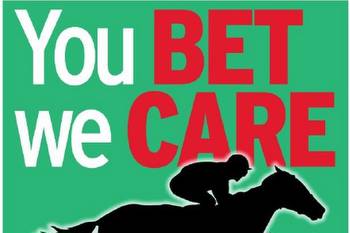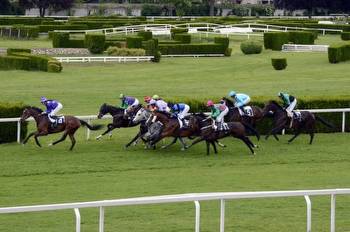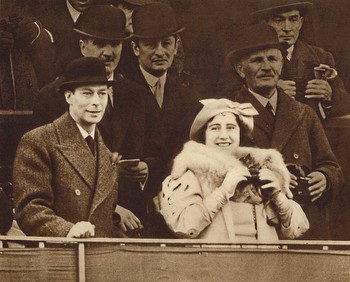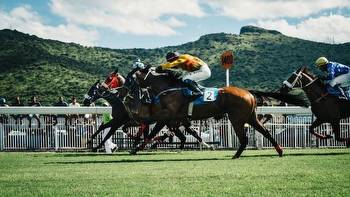The persistence of L’Escargot
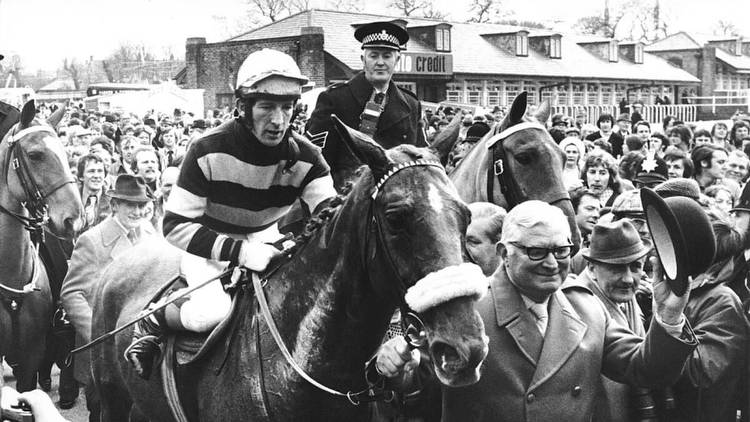
As the Fairyhouse and Aintree Grand Nationals approach, John Donohoe looks at a new book on a horse that enjoyed international success in the hands of Tommy Carberry and Dan Moore
It may seem hard to believe these days, but when Paul Carberry and Bobbyjo produced that magical run up to the finishing post to win by 10 lengths at Aintree in 1999, it was the first time in almost a quarter of a century that there had been an Irish success in the Aintree Grand National.
The previous year, the then eight-year old, in the red and yellow colours of Galway owner, Bobby Bourke, had won the Irish Grand National at Fairyhouse, Carberry's local track. Making the victory all the more sweeter was that Bobbyjo was trained by his father, the legendary former jockey, Tommy.
And while the 1999 Aintree victory was bridging an Irish barren period, it was made extra special by the fact that the previous winner in 1975 was L'Escargot, which was ridden by Tommy Carberry and trained by his father-in-law, Paul's grandfather, Dan Moore, making it a really special family occasion.
The win at the Liverpool track in ‘99 was the catalyst for Irish horses and jockeys to go on to dominate British National Hunt racing for the next two decades, from the Carberrys to the Geraghtys, Maguires, Powers, Walshs, Maddens, Willie Mullins and Gordon Elliotts of this world.
Before the 1975 win, there hadn't been an Irish-trained winner for 17 years.
Now, like Arkle, Best Mate and Monty's Pass, L'Escargot - also winner of the Cheltenham Gold Cup in 1970 and ‘71 - joins the illustrious list of horses who has had a biography published. The author, David Owen, who lives in Buckinghamshire in England, worked for 20 years for the Financial Times in the UK, France and North America, including as sports editor. His previous horseracing book, 'Foinavon: The Story of the Grand National’s Biggest Upset', won the Dr Tony Ryan Book Award.
While L'Escargot is most associated with Dan and Joan Moore, who had moved their training base from Fairyhouse to Ballysax in Kildare, what is less widely known is that it was another Meath-based trainer, Jimmy Brogan from Gilliamstown Stud in Rathfeigh, who had first spotted the horse's potential.
Jimmy also had a tract of land in Westmeath, some 40 miles away in the midlands, which he used for wintering cattle and a few younger horses. This helped him to keep his finger on the pulse of this largely agricultural region. It was there in the heart of Westmeath that he first set eyes on the long-legged yearling who would become L’Escargot.
Arthur O’Neill was a successful cattle man in the cattle country of Westmeath, founder and director of the Mullingar Livestock Agency. His wife Barbara, or Betty, had entered the thoroughbred trade in a small way after inheriting a single brood mare – Duchess Of Pedulas, or ‘The Duchess’ – from her mother.
Little, seemingly, was expected of the mare, who had been foaled in 1929 and sold originally for just £18. Yet astonishingly, in 1950, she gave birth to a son, Mr What, who went on to win the 1958 Grand National, by some 30 lengths.
Betty O'Neill had also been astute enough to keep a female offspring of the Duchess, and this mare's daughter, What a Daisy was to produce L'Escargot following a mating with stallion Escart III at Frank Latham’s Blackrath Stud in County Kildare.
The near uniformly chestnut foal with the merest splash of white on his forehead would have been just a few months old when his half-brother Havago streaked to his maiden victory. It was a year or so after this that Jimmy Brogan paid Betty O’Neill a sum thought to have amounted to either £1,000 or £1,500 for the yearling.
The writer says it is not possible, more than half a century later, to put an exact date on the delivery to Gilliamstown, with the driver's best estimate March or April 1965. This situates it within weeks of the crisp late-February morning when Jimmy Brogan, who was an Irish Grand National-winning trainer, fumbled for a cigarette at his favourite vantage point on the gallop adjoining his yard, and collapsed, never to rise again. He was aged just 46.
The Gilliamstown gelding – at this stage still unnamed, was sent to auction at Goffs in Ballsbridge, where it was sold to Tom Cooper for 3,000 guineas. Cooper was buying for his client, the American Ambassador to Ireland and keen racehorse owner, Raymond Guest, who had purchased Ballygoran Park, near Maynooth. He sent the unbroken chestnut gelding to Dan Moore, who had enjoyed racing success at Belmont Park in America.
Entrusted with breaking in the new gelding at Ballysax was jockey Ben Hanbury, and in preparation for his racing debut, Raymond Guest was to christen the three-year old.
That debut was to be at ‘Proudstown Park’ - Navan Racecourse, with Ben Hanbury wearing the chocolate and blue colours of the US Ambassador. In the Grattan Cup two-mile bumper. Tom Dreaper's Garrynagree was the favourite, with L'Escargot at 100/7. The horse with the French name won by five lengths at the racecourse where Arkle also had his first win.
Author Owen says: “From his first race to his penultimate, it was uncanny how often the media of the day took more interest in his beaten opponent than in L’Escargot. This happened in the humble ‘bumper’ race at Navan with which he started his career: as Andrew Kavanagh, jockey of the beaten favourite, told me, ‘On the day, it was the beating of Garrynagree, not the winning of L’Escargot.’ It happened in his first Cheltenham Gold Cup, when all eyes were on the brilliant jumper Kinloch Brae, owned by Anne Duchess of Westminster. And it happened when – eventually – he won his Grand National: he was the party pooper preventing Red Rum from claiming an unprecedented hat-trick of Grand National victories.
“In a sense, even then, on that strange day at Aintree, L’Escargot couldn’t win. Nor did his retirement serve to cement his place in the esteem and affections of the Irish racing public, for whom he should by rights have been a bona fide hero, if not on Arkle’s step of the podium then very close to it. An unfortunate misunderstanding resulted in him leaving the country where his exploits deserved to be most keenly fêted, to enjoy an opulent but secluded final decade 3,000 miles away in Virginia.”
Owen says part of the purpose of his book is to illuminate L’Escargot’s case for a more prominent place in horseracing’s pantheon.
“Another reason for writing it is L’Escargot’s remarkable versatility. He won on the flat. He won over hurdles. And – the clincher – he won in the very different steeplechasing conditions of the USA. This transatlantic dimension means that L’Escargot’s career weaves together the story of horseracing in three distinct countries – the USA, Britain and Ireland – in a unique way, and at a fascinating point in the sport’s development.
“This web extends to a fourth country, since L’Escargot’s sire raced in France, being placed in both the Lyons and Vichy Derbys.”
Owen says that the early 1970s in Britain and Ireland was a time when money from corporate sponsorship gushed into racing, helping to inspire a burst of innovation. Even in the USA, where jump-racing was struggling to maintain a toehold in big urban centres, this period saw a hugely well-financed attempt to establish what might have become a world championship of steeplechasing. L’Escargot was in the thick of much of this activity, winning the inaugural Wills Premier Chase at Haydock Park in Lancashire, and running in the inaugural Colonial Cup – the fledgling world championship – at scenic Springdale in South Carolina.
“My final justification for writing the book relates as much to the people closest to L’Escargot as to the horse himself,” Owen says. “There are only a handful of basic story templates in sport. ‘Underdog wins’ is one; redemption narratives are another. L’Escargot’s story is a powerful exemplar of a third story-type – that persistence pays off.
“By winning the Grand National at the fourth attempt, the horse clearly exemplified this. But the same is true, perhaps in even greater measure, of those around him. It was his jockey Tommy Carberry’s first Grand National win at the eleventh attempt. His owner, Raymond Guest, a former US ambassador to Ireland, had won the Epsom Derby twice but he had not previously won a Grand National, in spite of becoming fascinated with the race all the way back in 1928 (an extraordinary renewal in which only two horses finished, and which also happened to be the first Grand National with commentary transmitted ‘live’ to the USA). L’Escargot’s winning run was the thirteenth time a horse had carried Guest’s famous chocolate-and-pale-blue colours in the Liverpool spectacular. L’Escargot’s trainer Dan Moore had an even more poignant Grand National story: He had been striving for 37 years to make up for the deep disappointment of being beaten by a tiny margin when riding Royal Danieli to second place in Battleship’s Grand National in 1938. L’Escargot’s 1975 Grand National victory was a hard slog for the horse, though he made it look comfortable. It was intensely cathartic for these three distinguished legends of the turf. This is their story as well as his.”
Ginger McCain, trainer of Red Rum who was going for his third Grand National in a row in 1975, said: “For me, L’Escargot never properly received the credit he deserved”.
And David Owen's title for his story of the horse that foiled Red Rum and who should receive more credit: 'No Snail’!
‘No Snail, The story of L’Escargot, the horse that foiled Red Rum’, David Owen, Fairfield Books, available on Macmillan or Amazon. Kindlie £9.99; hard cover, £20.


